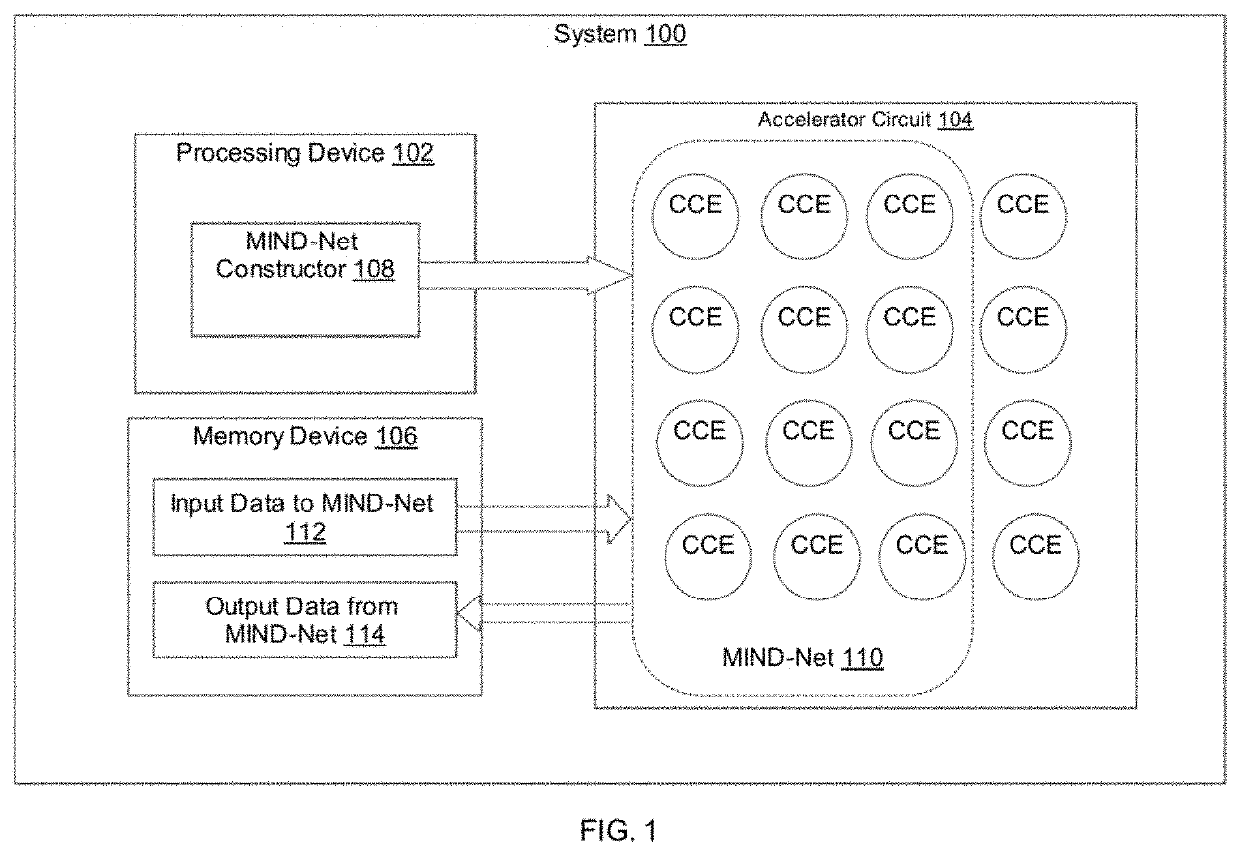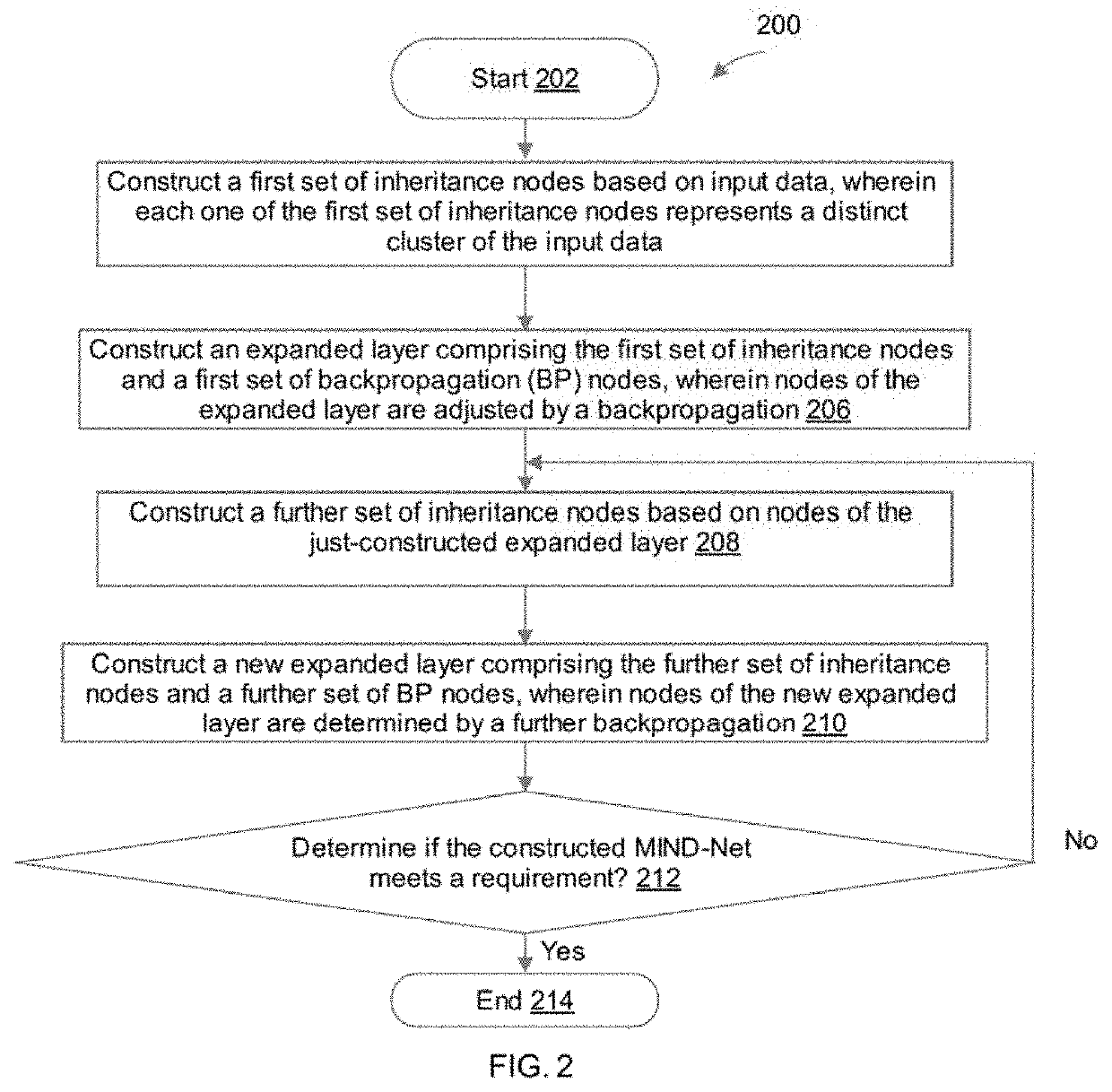System and method for implementing a neural network
a neural network and neural network technology, applied in biological models, multi-programming arrangements, instruments, etc., can solve the problems of limiting the accuracy of the neural network, the “curse of depth”, and the increase of the training time, so as to improve the processing speed, improve the prediction accuracy, and save power
- Summary
- Abstract
- Description
- Claims
- Application Information
AI Technical Summary
Benefits of technology
Problems solved by technology
Method used
Image
Examples
Embodiment Construction
[0050]FIGS. 8-18 illustrate a new internal learning paradigm for implementing a neural network that replaces a conventional backpropagation learning paradigm with an internal learning paradigm. The method illustrated in FIGS. 8-18 may be implemented on hardware such as the hardware illustrated in FIG. 7 to provide a method and system that utilizes internal optimization metrics (IOMs) and internal teaching labels (ITLs) to evaluate hidden layers of the neural network, the results of the evaluation being used to modify or configure the internal layers or nodes or the neural network, for example by pruning the layers or nodes. In addition, the method of the invention may be used in connection with a method of adding hidden layers or nodes, which is illustrated in connection with FIGS. 1-6, the description of which follows the description of FIGS. 8-18.
[0051]By way of background, the difference between the conventional backpropagation method and the internal learning method may be under...
PUM
 Login to View More
Login to View More Abstract
Description
Claims
Application Information
 Login to View More
Login to View More - R&D
- Intellectual Property
- Life Sciences
- Materials
- Tech Scout
- Unparalleled Data Quality
- Higher Quality Content
- 60% Fewer Hallucinations
Browse by: Latest US Patents, China's latest patents, Technical Efficacy Thesaurus, Application Domain, Technology Topic, Popular Technical Reports.
© 2025 PatSnap. All rights reserved.Legal|Privacy policy|Modern Slavery Act Transparency Statement|Sitemap|About US| Contact US: help@patsnap.com



